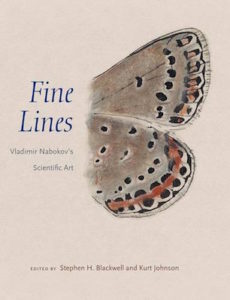 To be good at something to the point of being internationally noteworthy in the practice of it is an accomplishment few in the world will ever achieve. To be good at two things to such a level is, of course, far more rare – and when it does happen the two things are generally somewhat related to one another. But what of being good at two wholly different things to the point where your accomplishments in them are remembered and discussed – even debated – long after your own shuffling off of the proverbial mortal coil? Should these things be literature and lepidoptery, one name should immediately spring into the forefront of your mind: Nabokov.
To be good at something to the point of being internationally noteworthy in the practice of it is an accomplishment few in the world will ever achieve. To be good at two things to such a level is, of course, far more rare – and when it does happen the two things are generally somewhat related to one another. But what of being good at two wholly different things to the point where your accomplishments in them are remembered and discussed – even debated – long after your own shuffling off of the proverbial mortal coil? Should these things be literature and lepidoptery, one name should immediately spring into the forefront of your mind: Nabokov.
A best-selling novelist, highly acclaimed professor of literature, and thrice a nominee for the Nobel Prize, Vladimir Nabokov was also an avid lepidopterist for a time employed by Harvard University‘s Museum of Comparative Zoology as a part-time research fellow specializing in the curation of the museum’s collection of butterflies. Curiously, while his work lives on in both circles, his name has now become popularly synonymous with a single, frequently misinterpreted book.
Which is why it is indeed fortunate that Yale University Press has now brought out Fine Lines; Vladimir Nabokov’s Scientific Art. Edited by Stephen H. Blackwell and Kurt Johnson (both authors of previously published books about Nabokov’s scientific work), this new book reproduces one-hundred-fifty-four of Nabokov’s drawings along with a collection of essays that detail and discuss Nabokov’s contributions to lepidoptery, systematics, and scientific illustration.
